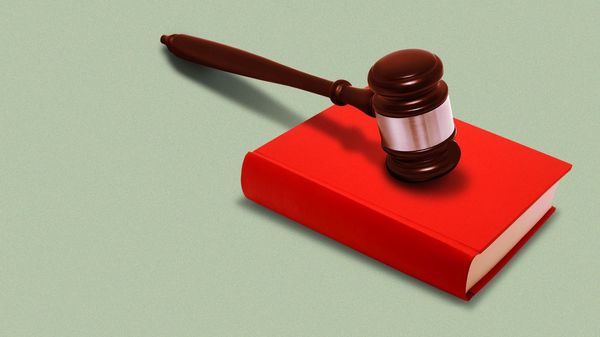As parents, we spend a lot of time choosing the right products for our babies—car seats, bottles, cribs, and toys. But what many don’t realize is that danger doesn’t always come with a warning label. In fact, some of the most unsafe products are everyday items we’ve grown to trust. From seemingly harmless gadgets to popular baby gear, risks often hide in plain sight. To help protect your little one, here are eight common items that could pose a threat and what you should know before using them.
1. Crib Bumpers
Crib bumpers may look cozy, but they’re one of the most unsafe products in the nursery. These padded liners are meant to keep babies from hitting their heads or getting limbs stuck between slats. However, they can restrict airflow, increase the risk of suffocation, and are now banned in several states. Pediatric experts recommend keeping cribs bare, with only a fitted sheet on a firm mattress. Simple, minimal setups are not only safer—they’re what sleep safety guidelines actually recommend.
2. Walkers
Baby walkers are still sold in stores, but many health organizations have called for a total ban due to the number of injuries they cause. These devices can give babies too much mobility before they have the coordination to stay safe. Falls downstairs, tip-overs, and access to dangerous objects are all risks associated with walkers. Even stationary activity centers, while a bit safer, require close supervision. Letting babies explore freely on the floor is safer for both development and injury prevention.
3. Teething Necklaces
Teething necklaces made of amber, wood, or silicone are marketed as natural pain relief, but they can actually create choking and strangulation hazards. Whether worn by a baby or used as a chew toy, the risk of the necklace breaking or wrapping around a baby’s neck is too high to ignore. The FDA has issued warnings against their use, especially while sleeping or unsupervised. Instead, stick to teething toys that are one solid piece, BPA-free, and made specifically for infants. Safe relief shouldn’t come with strings attached.
4. Infant Sleep Positioners
Sleep positioners or “nests” are designed to keep babies from rolling, but they are among the most unsafe products marketed to tired parents. These products can lead to suffocation if the baby turns or slides into soft padding. Despite their popularity, they go against safe sleep guidelines that recommend babies sleep flat on their backs on a firm surface. Most have been recalled or strongly advised against by safety agencies. Skip the extras and trust in a bare crib with tight bedding and a proper sleep sack if needed.
5. Heavy Blankets and Quilts
While they may seem comforting, heavy blankets and quilts are not safe for infants, especially during sleep. Babies can’t always move their heads or reposition themselves if a blanket covers their face, increasing the risk of suffocation. Even in cold weather, there are better ways to keep babies warm. Opt for wearable blankets or footed pajamas to avoid loose items in the crib. Your baby’s body heat and a safe sleep environment will keep them cozy enough without added risks.
6. Old or Secondhand Car Seats
It might be tempting to save money by borrowing a car seat from a friend or using one from an older sibling, but older or previously used car seats can be extremely dangerous. Materials break down over time, and unseen damage from a minor accident can reduce a seat’s effectiveness. Plus, safety standards are updated regularly, so older models may not meet current guidelines. Always check the seat’s expiration date and history before strapping your child in. This is one area where hand-me-downs aren’t worth the risk.
7. Small Toys or Toy Parts
Even with age-appropriate labels, small toy parts can easily end up in your baby’s mouth, nose, or airway. Anything that fits through a toilet paper roll should be considered a choking hazard. Always inspect toys for loose buttons, beads, or pieces that could detach. Keep older siblings’ toys in a separate area to avoid unintentional mix-ups. It’s better to be overly cautious than to deal with a scary emergency.
8. Scented Baby Products
Lotions, shampoos, and baby wipes often contain synthetic fragrances that may cause irritation or allergic reactions in sensitive skin. Babies’ skin is thinner and more absorbent, meaning harmful chemicals can enter their systems more easily. Look for fragrance-free and hypoallergenic labels, and avoid parabens, phthalates, and artificial dyes. Just because something smells like lavender doesn’t mean it’s safe for a newborn. When it comes to skincare, simpler is usually safer.
When In Doubt, Safety First
The market is full of baby gear that seems helpful, but not all of it is created with your child’s safety in mind. Many unsafe products are still sold simply because parents don’t know the risks or assume they’ve been tested thoroughly. Staying informed and asking questions is one of the best ways to keep your baby safe. Trust your instincts, do your research, and when in doubt—simpler is often better.
Have you ever come across a baby product you thought was safe but turned out to be risky? Share your experiences in the comments to help other parents stay informed!
Read More:
When Did My Baby Get So Big? 10 Milestones That Hit Hard
“Sleep When the Baby Sleeps” and Other Lies We Tell New Moms
The post Unsafe Products: 8 Everyday Items Dangerous for Babies appeared first on Kids Ain't Cheap.








